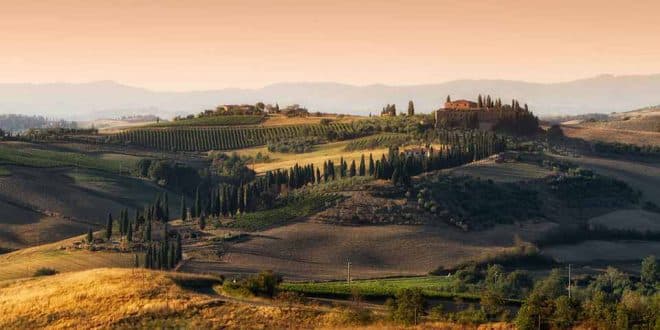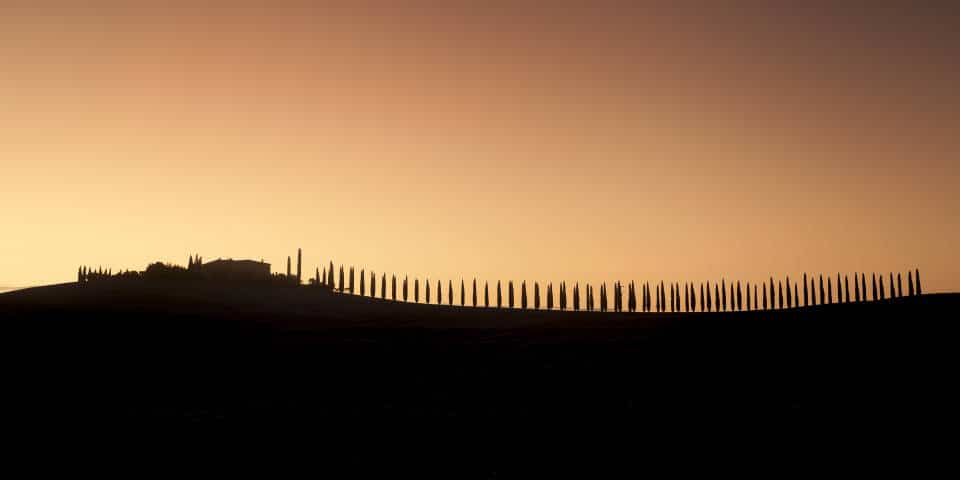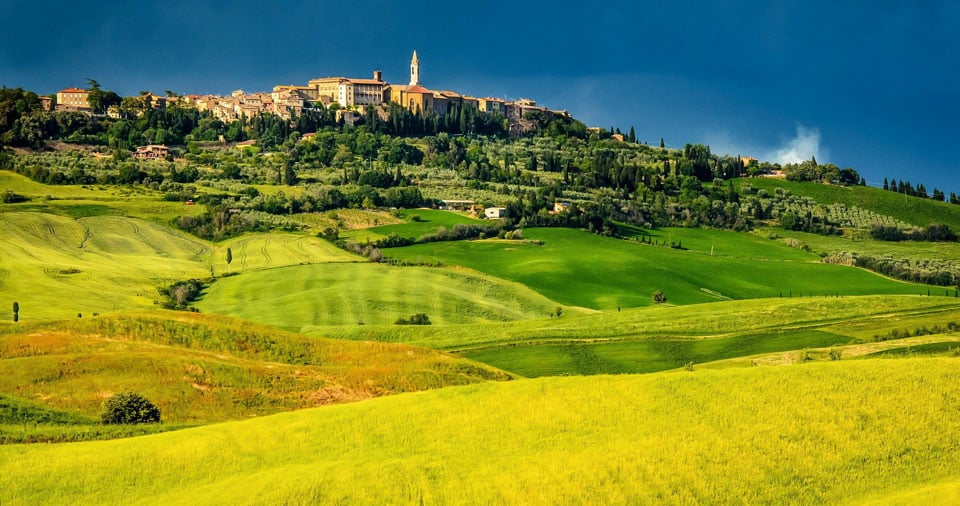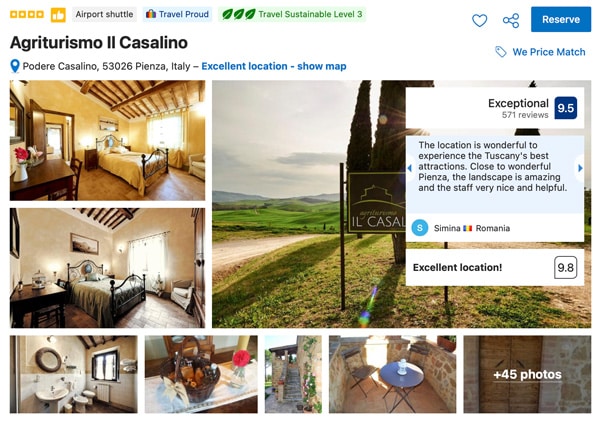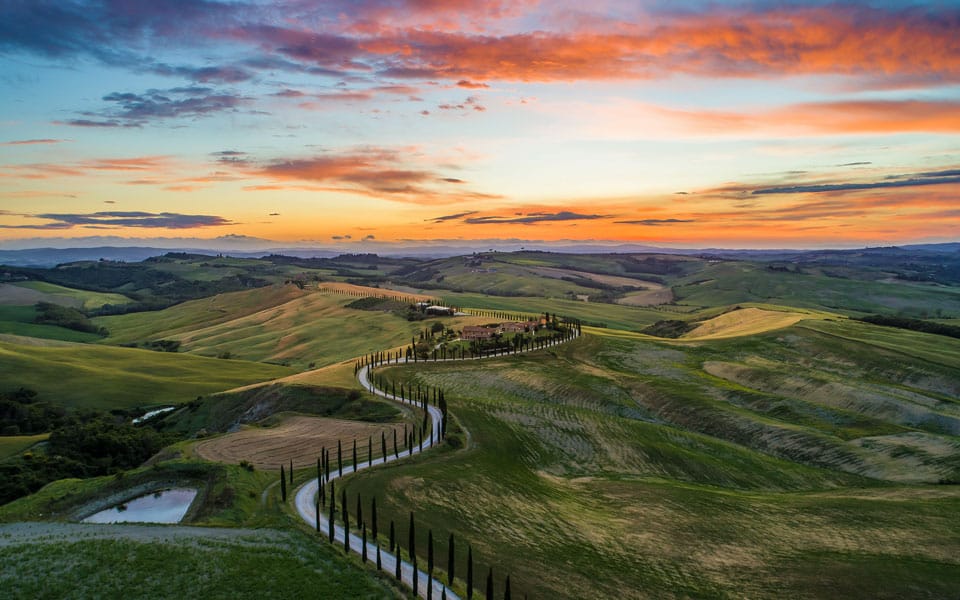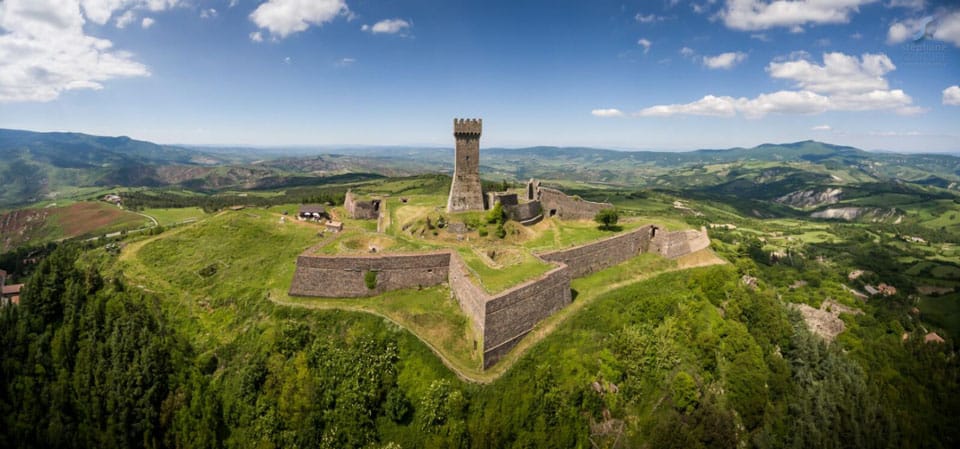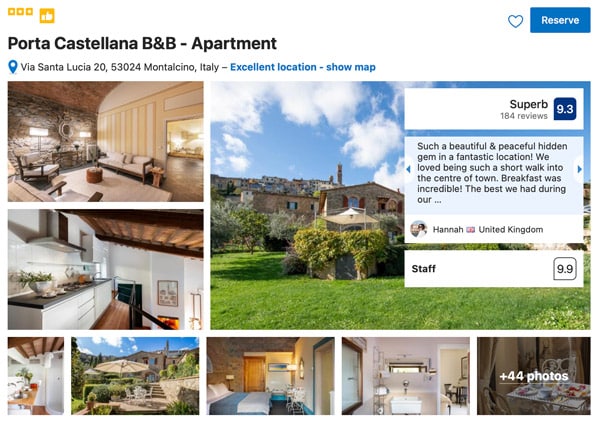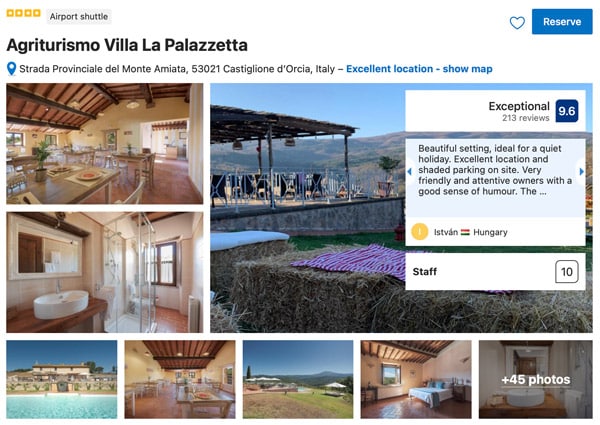Val d’Orcia Valley – an astonishing, fairy-tale place in central Italy. It stretches over 18,500 hectares and is recognized as one of the most picturesque corners of the planet. No wonder its landscape, still preserving its pristine beauty, has inspired artists of the Renaissance to create magnificent landscape paintings.
The enchanting and captivating view of Val d’Orcia has become the true hallmark of Tuscany. So, if you find yourself in Italy, it’s definitely worth visiting the provinces of Siena and Grosseto and savoring the tranquil beauty of this celebrated region.
To begin with, watch the video:
Page Contents
What Does the Valley Represent?
The cultural landscape of Val d’Orcia is a perfect blend of unique natural resources and human economic and social activities. Life in this area has been under strict and wise state control for several centuries, ensuring the preservation and development of the region.
The beauty of the Tuscan Val d’Orcia Valley consists of many elements, displaying a rich palette of colors, diverse shades, and forms, all playing a harmonious symphony in this breathtaking landscape:
- Gentle hills adorned with lush vegetation
- Mesmerizing outline of Monte Amiata Mountain
- Vast golden fields with neat hay rolls
- Olive and oak groves
- Vineyards planted in perfect rows
- Narrow tunnels of slender cypress trees
- Chestnut and beech trees majestically spreading their dense crowns
- Medieval settlements, reverently preserving their long history
- Colorful villas and sturdy towers immersed in an atmosphere of complete tranquility.
Interesting Facts from the Fields of Geology and History
The whimsical landscape of central Italy began to take shape about 5 million years ago after a significant drop in sea level. Val d’Orcia formed on the site of the clay and sandy bottom of a once-existing water kingdom.
Later, volcanic eruptions from Radicofani and Amiata transformed the hardened lava into dark volcanic rocks (trachytes). The relief of the land’s surface finally took its shape after erosion processes, creating the bed of the Orcia River, its tributaries, streams, and deep gorges.
In ancient times, Val d’Orcia played a significant role as the famous Cassia Road (Via Cassia) passed along it, connecting Rome with the northern part of the country. This route, spanning 130 kilometers, maintained its commercial, political, and religious significance up to the Middle Ages. Continuous streams of merchants and pilgrims enriched the nearby communities and strengthened their positions.
In the 14th and 15th centuries, this picturesque region fell under the jurisdiction of the city-state of Siena. In the second half of the 16th century, the lands of Val d’Orcia were already part of the Florentine Republic and primarily used for agricultural purposes. The Renaissance period became a time of forming the ideal model of harmonious relationships between humans and nature in this area.
From the mid-20th century, Val d’Orcia experienced a new wave of economic and cultural growth, becoming a popular destination for ecotourism lovers. Preserving the region’s aesthetics became a central and priority issue for nearby cities, including:
- Pienza
- Montalcino
- San Quirico d’Orcia
- Castiglione d’Orcia
- Radicofani.
Public organizations were established to popularize the region’s uniqueness, and mechanisms were developed to optimize the production and trade of local agricultural products, primarily wine, and cheese.
Read more about wines of Tuscany.
How to Get to Val d’Orcia Valley and What to See
The most comfortable way to witness the mesmerizing landscapes of the valley is by traveling by car or bicycle. You can find out more about car rental specifics at auto.italy4.me.
You can easily reach Val d’Orcia from any city in Italy. One option is to follow the A1 highway passing through Milan, Rome, and Naples (Milano – Roma – Napoli), and then take the Chiusi – Chianciano Terme road. Alternatively, you can choose the Strada Regionale №2, connecting Florence, Siena, and Rome (Cassia Firenze – Siena – Roma) for your journey. Be sure to visit the small medieval towns located on top of the hills.
Pienza
Pienza is a tiny municipality with just over 2,000 inhabitants, nestled among vineyards and olive groves.
The town is famous for producing exceptionally delicious sheep’s cheese and is a haven for food enthusiasts on gastronomic tours. Despite its small size, Pienza is of great interest from an architectural perspective, as it was designed as an “ideal Renaissance town.” In the mid-15th century, the great Florentine master Bernardo Rossellino was responsible for planning the space and constructing the main buildings.
Montalcino
Montalcino is a small commune with a population density of just over 20 people per square kilometer. It gained worldwide fame as the wine capital. The gentle microclimate here allows for the cultivation of the red Sangiovese grape variety. Several types of noble wines, including the renowned Brunello di Montalcino are produced from this unique grape variety. These two types of wine are considered to be of the highest quality not only in Tuscany but in all of Italy.
In addition to numerous enotecas (wine shops) in Montalcino, there are plenty of unique local artisan shops and ancient architectural monuments that allow you to feel the spirit of the medieval era.
San Quirico d’Orcia
The tiny town of San Quirico d’Orcia was founded by the Etruscans and occupies an area of 42 square kilometers.
It offers visitors enchanting views of the valley – this is where professional photographers capture their masterpieces at sunrise. Colorful narrow streets, centuries-old buildings, majestic ancient temples that have preserved their original appearance will captivate history enthusiasts.
Castiglione d’Orcia
Castiglione d’Orcia is a small commune with a population of around 2,500 people.
This fortress town, perched above the beauty of the valley, is located near the wild forests of Mount Amiata.
Radicofani
The unique medieval town of Radicofani, with a population of just over 1,000 people, has remained untouched by the destructive force of time.
The powerful fortress, standing at the top of the hill at about 900 meters in height, was built here in the 9th century. From the observation terrace, you can enjoy an unforgettable panoramic view of the valley. The ancient Romanesque-style churches create a feeling of immersion in the atmosphere of a distant and centuries-old history.
Watch the video of the view:
Where to Stay in Val d’Orcia Valley – Hotels and Country Houses
I recommend staying in farmhouse accommodations in the Val d’Orcia Valley, especially if you’re traveling by car – this type of vacation is very popular in Italy. Using a special link-filter, I’ve selected over 200 top-rated accommodation options based on tourist reviews.
In addition to the ones mentioned above, here are some other options that caught my eye:
B&B Porta Castellana
With divine views and priceless advice from the host about local restaurants and attractions, B&B Porta Castellana offers breakfast in the garden during the summer and right in the room during the winter.
La Palazzetta Villa
La Palazzetta with its open-air pool and valley views, is located in the Castiglione d’Orcia commune, making it an ideal place for a peaceful and secluded vacation.
Hotel Osteria Dell’Orcia
This 4-star Hotel Osteria Dell’Orcia is located near the historic Via Francigena, which served as a pilgrimage route.
Sitting alone on a hill, the hotel offers a balance between maximum comfort and unity with nature. It’s a perfect option for your stay.
The à la carte restaurant, managed by chef Eliana, offers traditional Tuscan dishes and an extensive wine list, including Brunello and Montepulciano wines.
Feel free to ask about accommodation options and vacations in the Val d’Orcia Valley. I’d be happy to read your reviews about this unique place in the article’s comments section.
 Italy for me From Italy with love
Italy for me From Italy with love

